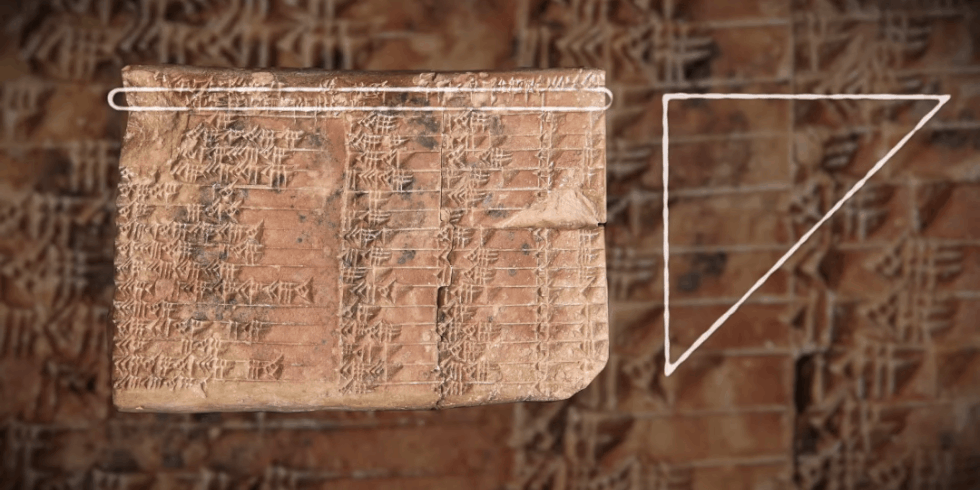For hundreds of years, schools have taught that the Greek mathematician, Euclid, is the father of geometry, and that Pythagoras was the man who discovered the founding theorem of all trigonometry: a²+b²=c².
Well, it turns out that the Pythagorean Theorem isn’t so Pythagorean after all.
Researchers working at UNSW Sydney have been studying a Babylonian tablet, known as Plimpton 322, in an article published in Historia Mathematica, they say that this tablet proves that the Babylonians discovered exact sexagesimal trigonometry at least 1500 years before the ancient Greeks did. Scientists knew that this tablet was an educational tool, but until now, they weren’t sure what it was supposed to be educating about.
The team writes: “We [traced] the origins of trigonometry to the Old Babylonian era, between the 19th and 16th centuries B.C.E. This is well over a millennium before Hipparchus is said to have fathered the subject with his ‘table of chords’…Plimpton 322 is a powerful, exact ratio-based trigonometric table.”
Plimpton 322 contains a table filled with sets of Pythagorean triples. These are sets of numbers that correspond to the sides of right triangles, that work inside the Pythagorean theorem. The researchers believe that Plimpton 322 could have been used in surveying and construction, in planning large projects like palaces and pyramids. This is an immense discovery.
The Babylonians had an incredible understanding of numbers and time. They used a base-60 counting system instead of the base-10 system we use today. Since there are a lot more ways multiples of 60 can be divided into fractions, trigonometry was much easier for them than it is for us. The researchers working on this project think we have a lot to learn from Babylonian trigonometry…if only we’ll pay attention and listen.
Looks like we’re going to have to rewrite some math textbooks, but I don’t think anybody will be changing the Pythagorean Theorem’s name any time soon. Still, it’s not every day that we change the face of mathematical history!


